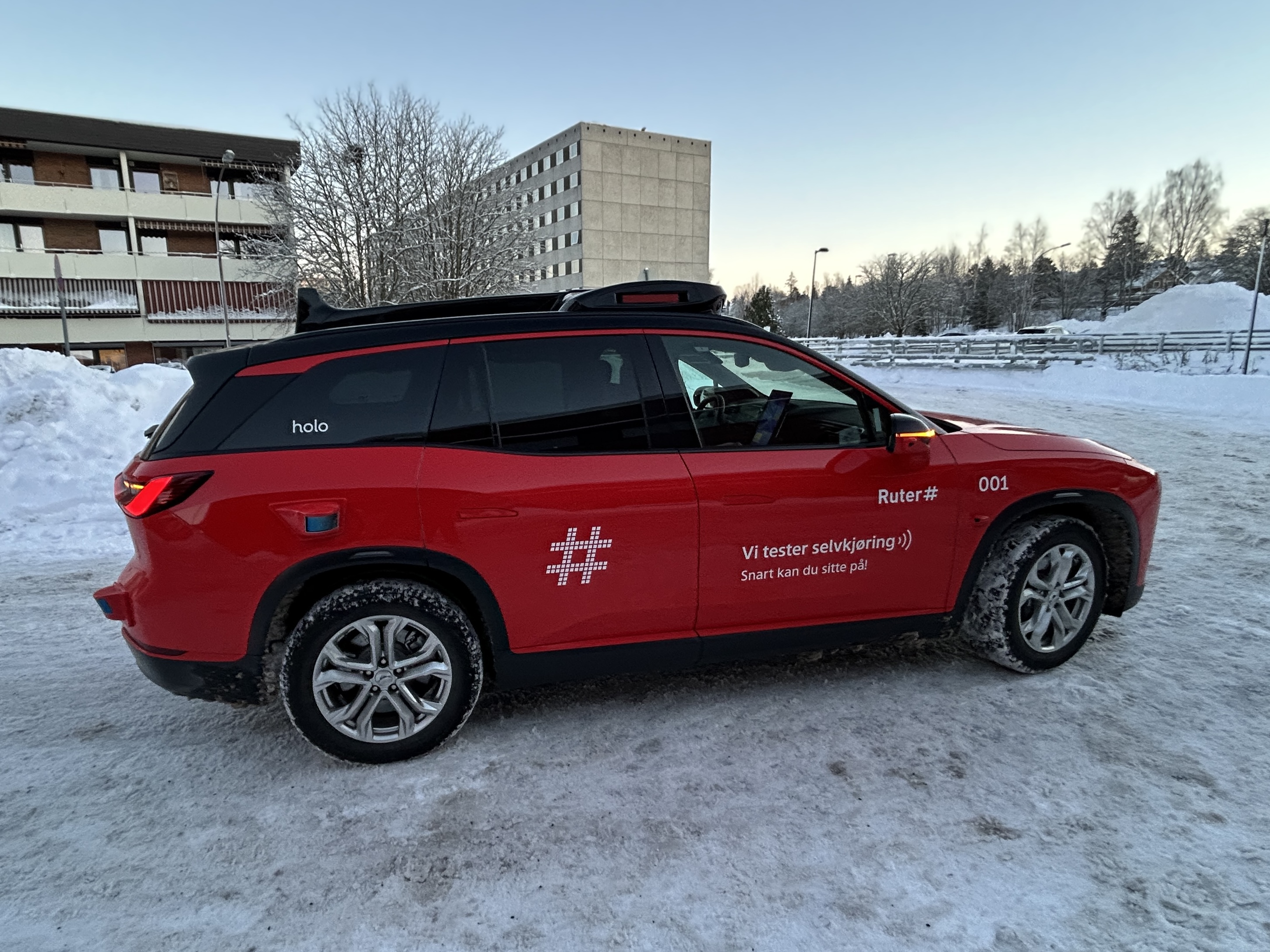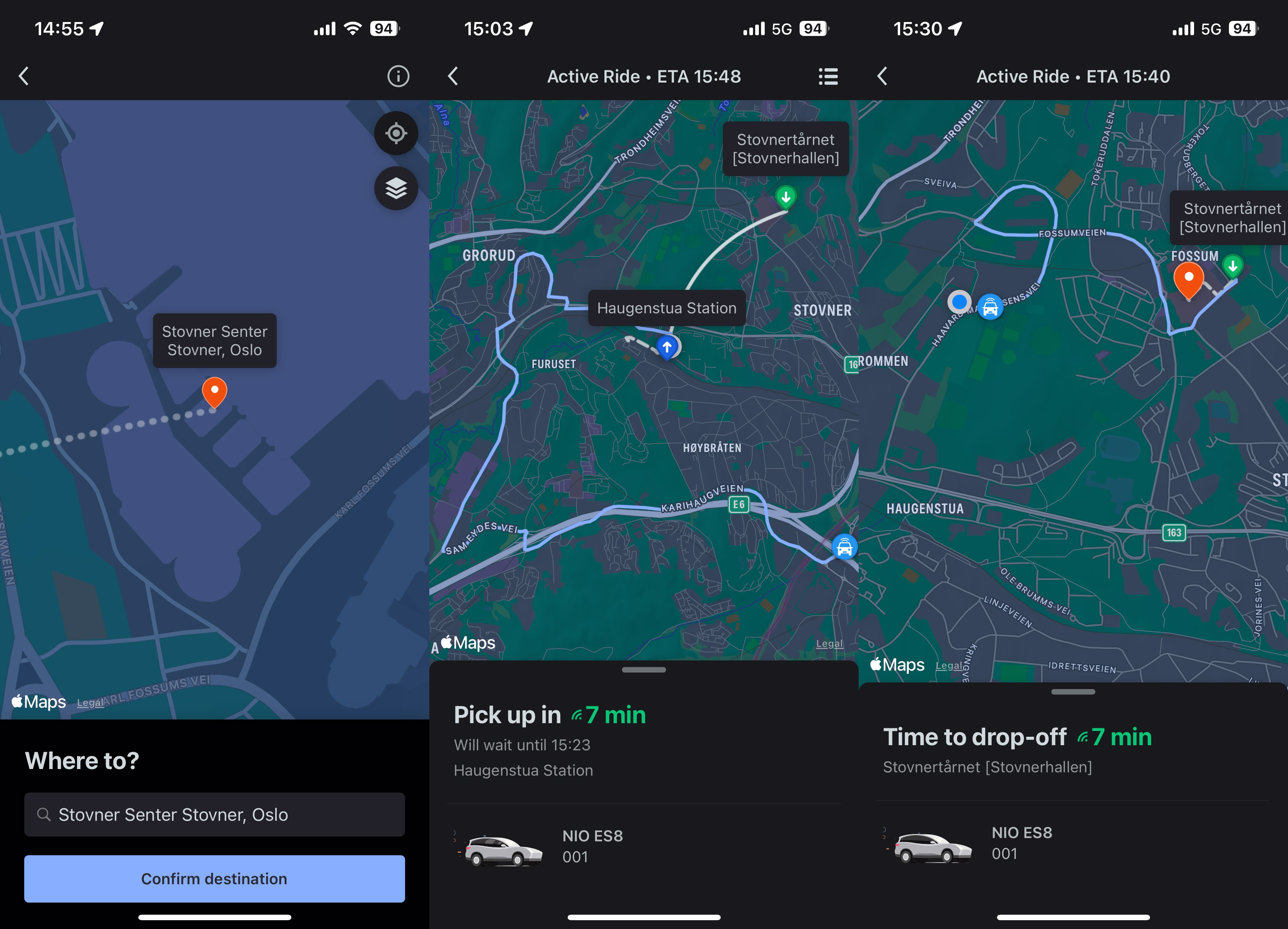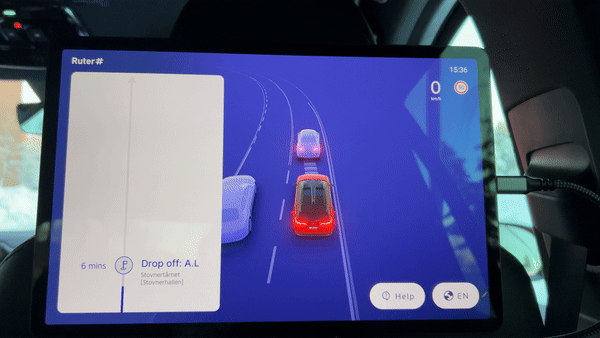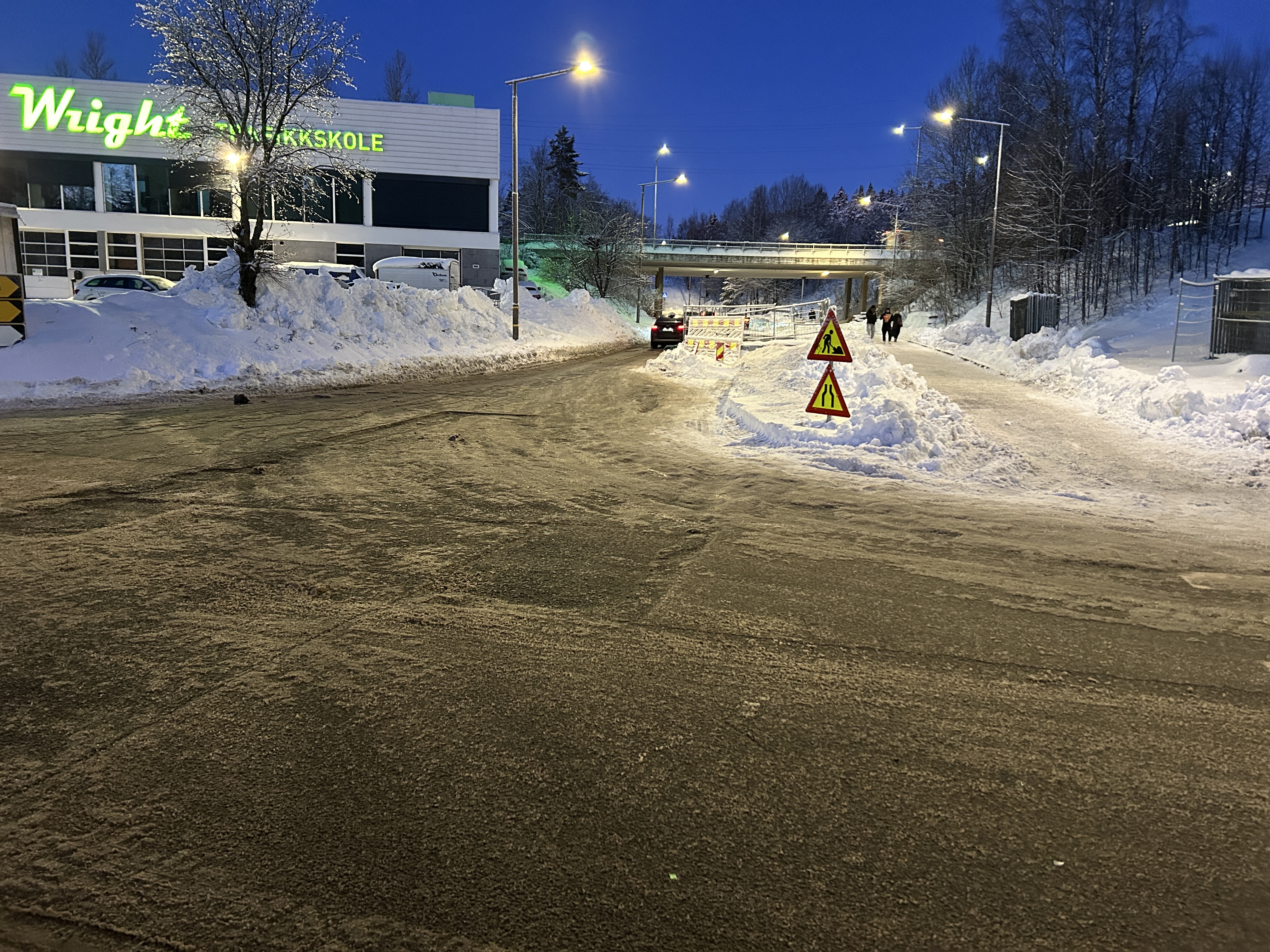4 minutes
Autonomous Vehicles in Norway - Winter Edition

Ruter is according to Wikipedia “a public transport authority for Oslo and Akershus counties in Norway”.[1] Ruter suggests that on-demand transportation could be a great alternative to private cars. This autonomous vehicles service would pick you up wherever you are and take you to your destination. By sharing the ride with other passengers, the service could reduce the number of vehicles on the roads in Oslo.[2]
To achieve this have Ruter startet a pilot project with self-driving vehicles in the Grorud Valley, Oslo. The purpose of the pilot project is to establish and test a small-scale self-driving transportation service and gain insights and experience from it.[2] This is the pilot project i’m a part of.
Winter in the Loop
What makes this pilot particularly interesting is the setting: Norway, in winter. Snow-covered roads, icy surfaces, freezing rain, low light levels, and unpredictable weather patterns create conditions that challenge even the most experienced human drivers. For autonomous vehicles (AVs), these challenges are multiplied.
Sensors such as lidar, radar, and cameras are sensitive to snow, slush, and fog. Lane markings may be obscured. Pedestrians are often bundled up and hard to detect. And road edges can disappear under several centimeters of white. Yet, this is exactly the kind of real-world testing that’s needed to make AVs viable in countries like Norway.
My First Car Ride
Using the autonomous vehicle service starts with the app Selvkjørende, which was only for beta testing through TestFlight. After downloading and opening the app, you’re welcomed by a clean interface that combines traditional public transport options with the new on-demand self-driving service.
On the home screen, you simply enter your destination. The app then checks for nearby available autonomous vehicles and shows you the estimated wait time. In my case, I selected Stovner Senter as my pickup location and was matched with a NIO ES8 vehicle. The app estimated a 7-minute wait, which was far from accurate. It was more like 20 minutes.
The map interface is detailed and responsive, allowing you to see your location, the approaching vehicle, and the planned route. I was picked up near Haugenstua Station, and the app showed real-time updates on the vehicle’s progress toward Stovnertårnet. Both pickup and drop-off points were clearly marked on the map, and the app even displayed how long the vehicle would wait at the pickup location.

Image 2: Screenshot from the app. Copyright belongs to Ruter. Fair use.
During the ride, I could follow the car’s movements on the map in real-time. The interface was smooth, with clear communication about estimated arrival times and vehicle ID. The vehicle itself was quiet and comfortable, and a safety operator was present throughout the journey. It felt futuristic, yet surprisingly normal.
This first ride gave me a sense of how intuitive the user experience is. Everything from ordering the ride to completing the trip was designed to be as seamless as using any other ride-hailing app.

Image 3: The pilot project has a operator that kicks in when needed. Premeditated, CC BY-SA 4.0, via Wikimedia Commons.

Image 4: Screenshot from the app when waiting for the car and during the trip. Copyright belongs to Ruter and Apple Maps. Fair use.
The Passenger Experience
Inside the car, each passenger has a front-facing screen mounted to the seat in front of them. This display shows the vehicle’s current location, speed, nearby traffic, and remaining time to drop-off — similar to what you’d see in a robotaxi concept. At one point during the ride, the display indicated “8 minutes to Stovnertårnet”, and I could follow our lane position and surrounding vehicles visually.
Despite the car driving itself, it felt very safe. The safety operator sat in the driver’s seat ready to take over if needed, but the vehicle handled everything on its own: navigating traffic, stopping at intersections, and making smooth turns.
A sticker in the car reminded us not to disturb the safety operator — an important detail that subtly reinforces the experimental nature of the ride. Still, from a passenger’s point of view, the entire journey felt well thought-out and user-friendly.

Image 5: Here are we waiting for the traffic ligh. Andreas Lien, CC BY-SA 4.0.
This first ride gave me a sense of how intuitive the user experience is. Everything from ordering the ride to completing the trip was designed to be as seamless as using any other ride-hailing app — but with a significant twist: no human driver behind the wheel - or maybe that will be possible in the summer.
Obstacles
In progress..

Image 6: This was the first obstacles for the autonomous vehicle. Andreas Lien, CC BY-SA 4.0.